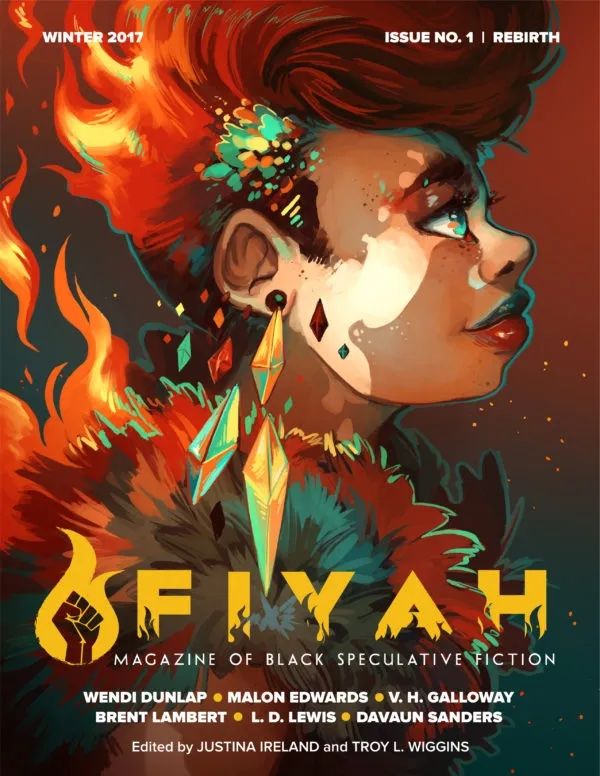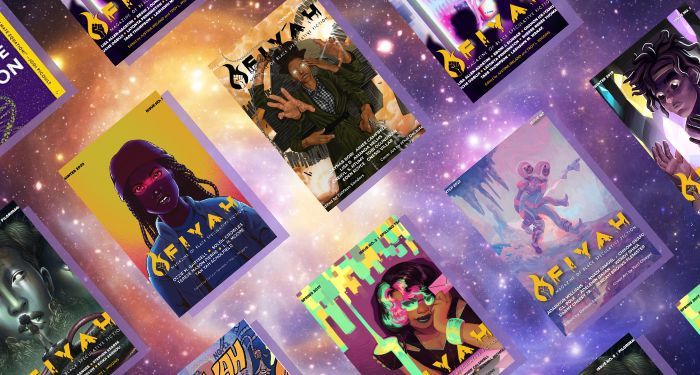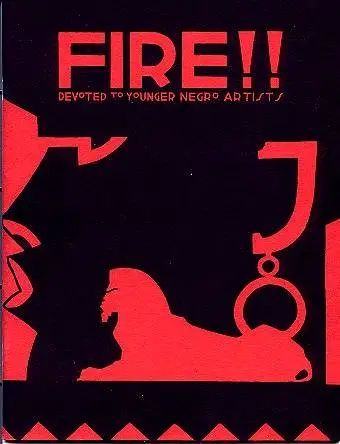In the summer of 2016, the speculative magazine Fireside Fiction published #BlackSpecFic: A Fireside Fiction Company Special Report. The findings were deeply troubling: Out of more than 2,000 stories published in 2015 in mainstream paying markets, only 38 were by Black authors. To put it bluntly, that’s less than two percent.
The dearth of BIPOC authors, editors, and other professionals in publishing is nothing new. Shelly Romero and Adriana M. Martínez Figueroa wrote “‘The Unbearable Whiteness of Publishing’ Revisited” in January of 2021, in which they stated, “Publishing is an old industry, and it has well-established ways of systematically preventing BIPOC professionals from entering its workforce. The ways it gatekeeps are insidious but not unknown.”
Focusing the lens: Black Speculative Fiction
To hone the microscope further, specifically in the speculative community — I am using speculative fiction to cover science fiction, fantasy, horror, etc. — and among short fiction publishing, the problem remains. After the #BlackSpecFic report published in 2016, writer and project manager L.D. Lewis viewed the data as a call to action.
“A lot of excuses were made to explain why that was happening,” Lewis said, in regards to findings that less than two percent of published stories were by Black-authored works. “[Excuses like] Black authors didn’t exist in volume, or they weren’t submitting for publication, or the works they were submitting were of such consistently poor quality that reputable publications were completely justified in never publishing any Black authors, ever. This was all ridiculous, of course.”
With the report rippling across the speculative fiction community, Lewis, along with other Black creators from the Niggerati Space Station virtual salon, and the support of best-selling author Justina Ireland, created FIYAH, a magazine of Black speculative fiction. The first issue published in 2017, and after about 7 years and 25 issues, there is progress, but still much work to be done.
Rebirth: From 1926 FIRE!! to 2017 FIYAH
FIYAH was the not the first spark, though it would continue a legacy. Let’s go back in time.
In 1926, the Black literati of the Harlem Renaissance, including Langston Hughes and Zora Neal Hurston, published FIRE!!, a “Quarterly Devoted to Young Negro Artists.” According to the African American Registry’s overview of Fire!!’s history, the magazine explored polarizing issues, including homosexuality, interracial relationships, and color prejudice. After only one issue, the headquarters of Fire!! burned to the ground, ending its operations.
In addition to the #BlackSpecFic report, and FIRE!!‘s origins, FIYAH‘s inspirations are strong.
“The publication started out rooted in a couple things: spite, naturally, and also love for those authors whose work was systemically denied a home,” Lewis said.
In 2017, FIYAH‘s first issue revolved around the theme of rebirth. Edited by Justina Ireland and Troy L. Wiggins, FIYAH‘s creators published the first issues, which had table of contents that showcased the work of Lewis and other co-founders. Consisting of stories ranging from an alternate future Chicago, to two brothers navigating a post-apocalyptic world of police magic, to a fenox seeking freedom, and more, FIYAH quickly became a powerful and necessary new presence in the speculative short fiction community.

“My favorite issue was the first one,” Lewis said. “On a macro level, it was our launch or the relaunch of our spiritual ancestor publication FIRE!! (1926), and its performance would set the tone for the future of the magazine. On a micro level, it was also my first short story (well, novelette) publication. That first issue featured the work of the founders and presented us not just as people with maybe an axe to grind and a publication to build, but as writers ourselves. Geneva Benton, who did our first year of covers, also winning her Hugo for Best Artist was huge for me as Art Director at that time.”
Hugo award winner and reviewer Charles Peyseur reviewed the first issue of FIYAH with much acclaim, writing in Quick Sips, “These are stories that examine and challenge the idea of difference among sentient beings, that refuses to allow the ‘science’ of intolerance and hatred to decide who should be considered a person and who should not.”
Next Steps: Black professionals in publishing
In 2019, Lee & Low Books conducted its Diversity Baseline Survey for publishing professionals (publishing staff, review journal staff, and literary agents, etc) in the industry. The first survey was conducted in 2015 (labeled as DBS 1.0), and its findings were similar to Fireside‘s first #BlackSpecFic report and were equally troubling. The survey was co-authored by Laura M. Jiménez, PhD, and Betsy Beckert, and included a large sample size. For the 2019 survey, there was a 112 percent increase in responses, and the 2019 survey was dubbed DBS 2.0.
Included in the sample size:
The Diversity Baseline Survey (DBS 2.0) was sent to 2,609 reviewer employees, 17,100 trade publishing employees, 1,528 university press employees, and 516 literary agents for a total of 21,753 surveys deployed. DBS 2.0 had a response rate of 36.2 percent. The survey was sent to both children’s and adult divisions of each company.
From “Where Is the Diversity in Publishing? The 2019 Diversity Baseline Survey Results” published in January 2020
From the above responses, only five percent of the field consisted of Black/African American people on publishing staff. Included with these findings was that there was only a three percent change from the first DBS report in 2015. As stated in the report on the findings, in bold letters, “the field is just as White today as it was four years ago.”
The Hugo Awards
At the start of 2019, FIYAH was going on nine issues, having published writers such as Tade Thompson and Sheree Renée Thomas. Later, at the 2019 Hugo Awards, FIYAH received its first finalist nomination for Best Semiprozine.
“There’s a lot of self-deprecation in this work,” Lewis said. “A need to reiterate often that we didn’t start a publication to win awards. Recognition is nice, but it’s nicest when it’s coming from your own community. It meant a lot more to Black authors, editors, our people within publishing’s ecosystems to see us on ballots or to eventually win. What our 2019 nomination meant to us as staff was an occasion to finally meet one another in person!”
The occasion came again in 2021, when FIYAH won the Hugo award for Best Semiprozine. Lewis and Brent Lambert accepted the award together in person. That year, FIYAH was on the ballot for both Semiprozine and Best Related Work for FIYAHCON, a virtual convention that celebrates BIPOC contributions in speculative fiction, for which Lewis was also Director.
FIYAHCON began in 2020 alongside the Ignyte Awards. Like FIYAH, FIYAHCON and the Ignyte awards received much acclaim from the speculative fiction community. Still, as is the case when any marginalized person, group, or organization receives praise and awards, there were whispers of doubt among oppressors.
“As happens when you accept accolades as a marginalized entity, there was also the question of why we won,” Lewis said. “I mean, we look these gift horses directly in the mouth whether we mean to or not! We’ve been nominated both before and since, but we won in the Black Lives Matter year.”
Unbeknownst to many, FIYAH made history in 2021 at the Hugo Awards. It was “the first and only limited-demographic magazine, a publication staffed entirely by Black writers, to win Best Semiprozine since that categories inception.” Yet that achievement was barely covered, if at all, in most notable publications. Lewis said FIYAH‘s staff was never invited by an outlet to talk about this milestone outside of friends’ podcasts.
“That’s why it’s vital for us to seek our validation from within the community we’re serving,” Lewis said. “Awards don’t mean much if we’re failing those people. So as long as they’re saying we did good, a [very heavy] rocket was just icing.”
Looking Ahead: A Need for Continued Growth and Support
In December 2022, FIYAH released the latest iteration of the #BlackSpecFic report, looking at short speculative fiction published in 2021, with support from The Carl Brandon Society, Diabolical Plots, and Catstone Books. FIYAH took on compiling the report from Fireside, who published the original reports from 2015-2017, composed by Cecily Kane and Ethan Robinsons.
With help from Diabolical Plots, which runs The Submission Grinder, a free database of markets that writers can use to track submissions, 65 markets were valid for report study. It is also important to note that this report is based on United States markets. Lewis, along with Nelson Rolon, composed the report.
The latest results shows much-needed progress, while also highlighting the need for growth.
“The latest #BlackSpecFic iteration has indicated that Black-authored works made up 6.8 percent of the field published in 2021 (+4.9 percent change from 2015), but all of five out of 60+ outlets with a Black editor on the masthead were responsible for a sizable portion of that even without FIYAH’s own contribution,” Lewis said.
Lewis goes on to note that having Black professionals at the helm is essential to continued growth:
The studies have indicated that having Black editors is key in both attracting Black authors and seeing their works published. The presence of a Black editor removes or diminishes that barrier of connection with culture or voice. I think we see our way forward through developing those editors, and I’d like to see that kind of growth across other marginalized demographics as well. There aren’t nearly enough Indigenous or Latine stories outside of perhaps the occasional special issue or limited-demographic submission calls, and that’s similarly reflected on editorial mastheads of publications.
L.D. Lewis, FIYAH co-founder, Director of FIYAHCON, and composer of the latest 2022 #BlackSpecFic report.
The next report is planned for 2025, with hope for continued growth and opportunities for Black voices in speculative fiction, and of course, Black voices in publishing as a whole. Looking ahead for FIYAH specifically, there will be changes and adjustments. Lewis said she will be leaving regular operations for FIYAH at the end of 2023.
“The Ignyte Awards will continue and I’ll still be managing our grants series, but I’ll be turning over the operation of the website, issues composition, and general project generation to my assistant Nelson Rolon and the rest of the team,” Lewis said. “I’m most interested in seeing where fresh eyes steer us. I know there’s a lot of enthusiasm for print editions and more event presence, so I’m looking forward to stumbling across FIYAH someplace unexpected out in the wild.
In addition to changes at FIYAH, the future of FIYAHCON, the convention that’s hosted the Ignyte Awards, is also in flux. The point of creating FIYAHCON was to show that there are ways to serve and uplift marginalized communities in conventions, proving its effectiveness and reach.
“It was, in fact, possible to have more than one Black/brown face on a panel at a time, and those people could talk about craft and not just diversity or 101-level introductions to their culture’s storytelling conventions,” Lewis said. “Accessibility didn’t have to be an afterthought. You could absolutely serve more than just local time zones. You could have an award ceremony where ethnic names weren’t butchered.”
Having proven this through FIYAHCON for two years, Lewis hopes other conventions will take FIYAHCON’s successes and implement it themselves. There doesn’t always have to be one entity shouldering the burden while the rest take a seat.
“I don’t know right now what the future holds for FIYAHCON, but the hope was always to have other cons adopt what we were able to execute successfully into their own events so we didn’t have to be the only space taking care of those who felt they’d been left behind,” Lewis said.
Further Reading
It is my hope that more small presses and magazines are highlighted for a broader reader audience. For additional reading, you can check out my profile on Neon Hemlock Press, which publishes queer speculative fiction. In addition to that, check out these other Book Riot articles for continued reading on diversity in publishing and uplifting Black and other marginalized voices:

